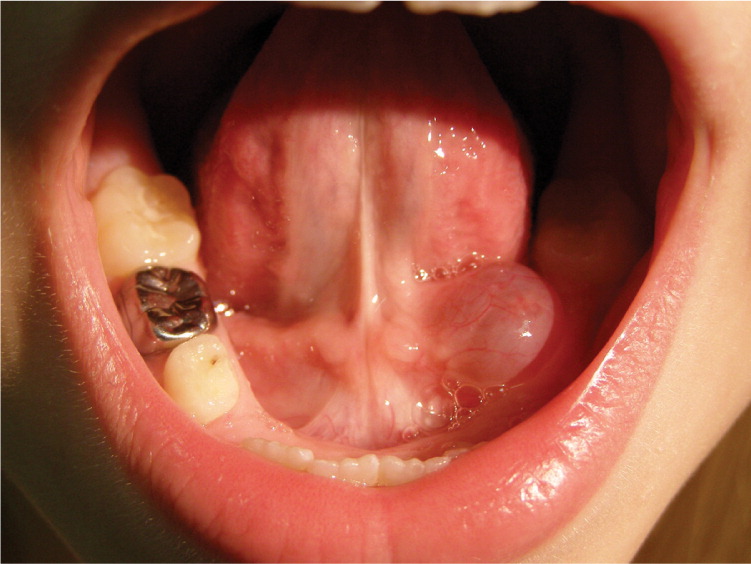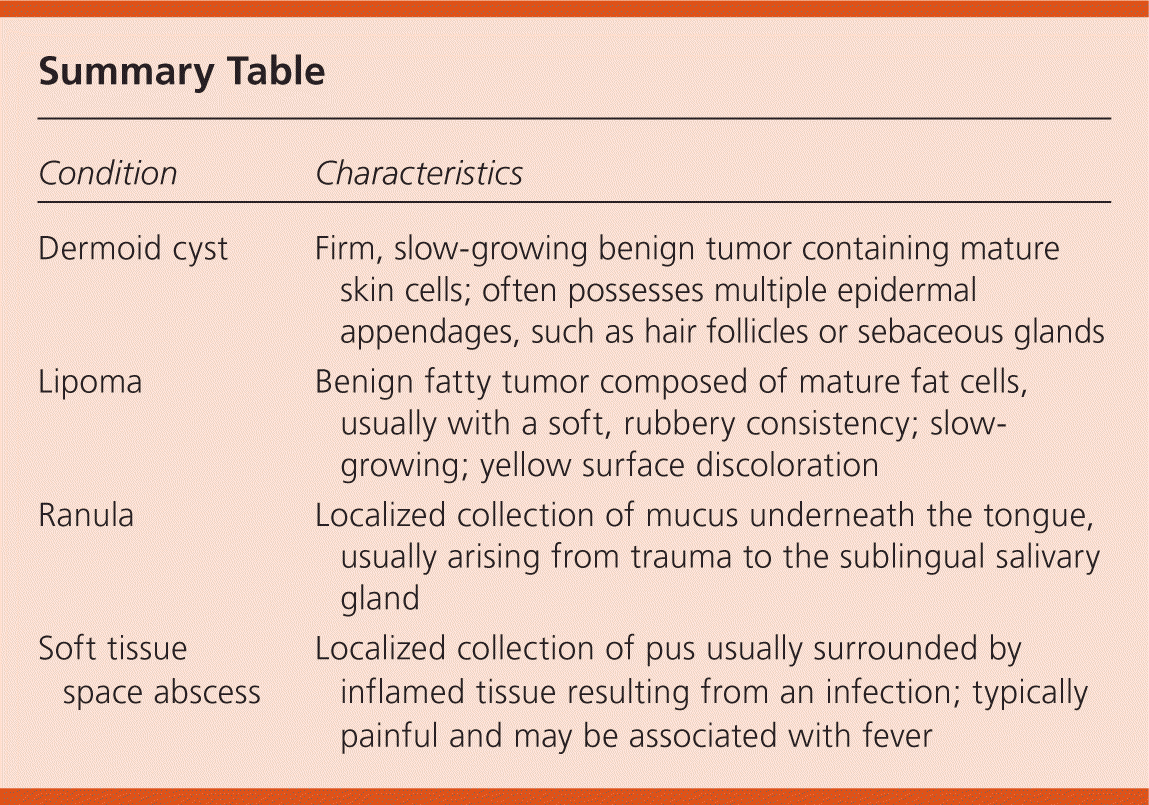
Am Fam Physician. 2011;84(4):441-442
Author disclosure: No relevant financial affiliations to disclose.
An eight-year-old girl presented with swelling in the floor of her mouth that began 10 days prior. She denied any recent fever or illness. Physical examination revealed a nontender, bluish, fluctuant sublingual mass with no obvious extension into the neck (see accompanying figure). No cervical adenopathy was present.

Question
Discussion
The answer is C: ranula. Ranulas are mucus retention pseudocysts in the floor of the mouth. They can originate from trauma to or obstruction of the sublingual salivary gland. Less commonly, the submandibular gland or the minor salivary glands of the mouth may be involved. There are two main types of ranulas. Oral ranulas originate superior to the mylohyoid muscle. Cervical or plunging ranulas, which penetrate through the belly of the mylohyoid muscle, often produce an externally visible neck mass.
Complete excision of the pseudocyst with the affected salivary gland is associated with the least likelihood of recurrence.1 Marsupialization of the cyst with packing can also be performed, and some success has been reported with placement of a single suture into the dome of the cyst.2 Watchful waiting may be an appropriate medical treatment for oral ranulas.3 Injections of onabotulinumtoxinA (Botox) or sclerosing agents are considered experimental, and surgical management is usually preferred.4–6
Dermoid cysts are firm, slow-growing benign tumors that contain mature skin cells and are covered with a thick wall. They can contain multiple structures in the skin, including sebaceous glands, hair follicles, and other structures derived from the ectoderm. Dermoid cysts may occur in the skin, intracranially, intraspinally, paraspinally, or intra-abdominally.7 Most cysts found on the floor of the mouth occur in persons 10 to 30 years of age.7 Treatment is complete surgical excision.
Lipomas are common benign fatty tumors composed of mature fat cells that can develop almost anywhere in the body. Lipomas represent about 1 to 5 percent of all neoplasms of the oral cavity.8 Superficial lipomas are slow-growing, soft, rubbery masses that may have a yellow surface discoloration. Treatment is surgical excision for symptomatic or rapidly enlarging lesions.
An abscess is a localized collection of pus that usually forms in response to infection. The surrounding tissue is typically erythematous, inflamed, and painful. Fever may be present. Standard treatment is incision and drainage of the abscess.

| Condition | Characteristics |
|---|---|
| Dermoid cyst | Firm, slow-growing benign tumor containing mature skin cells; often possesses multiple epidermal appendages, such as hair follicles or sebaceous glands |
| Lipoma | Benign fatty tumor composed of mature fat cells, usually with a soft, rubbery consistency; slow-growing; yellow surface discoloration |
| Ranula | Localized collection of mucus underneath the tongue, usually arising from trauma to the sublingual salivary gland |
| Soft tissue space abscess | Localized collection of pus usually surrounded by inflamed tissue resulting from an infection; typically painful and may be associated with fever |
